Green Haven Softens the Busyness of Tokyo
Hamarikyu Garden creates a peaceful oasis of green in the midst of Tokyo skyscrapers.
by Nancy Kerstetter
Hamarikyu Koen began as a garden during the Edo period (1600-1868), sitting alongside Sumida-gawa, a large river flowing through Edo, the modern day Tokyo. Hamarikyu Garden today provides a green oasis nestled in the midst of urban skyscrapers. From outside, you barely notice the garden and could easily walk by. But looking from the inside out, the beauty of Hamarikyu deeply softens the high-rise towers, making them appear as designed to blend with the garden. Yet, there is a distinct contrast beyond the garden walls—where the busyness of the city transpires.
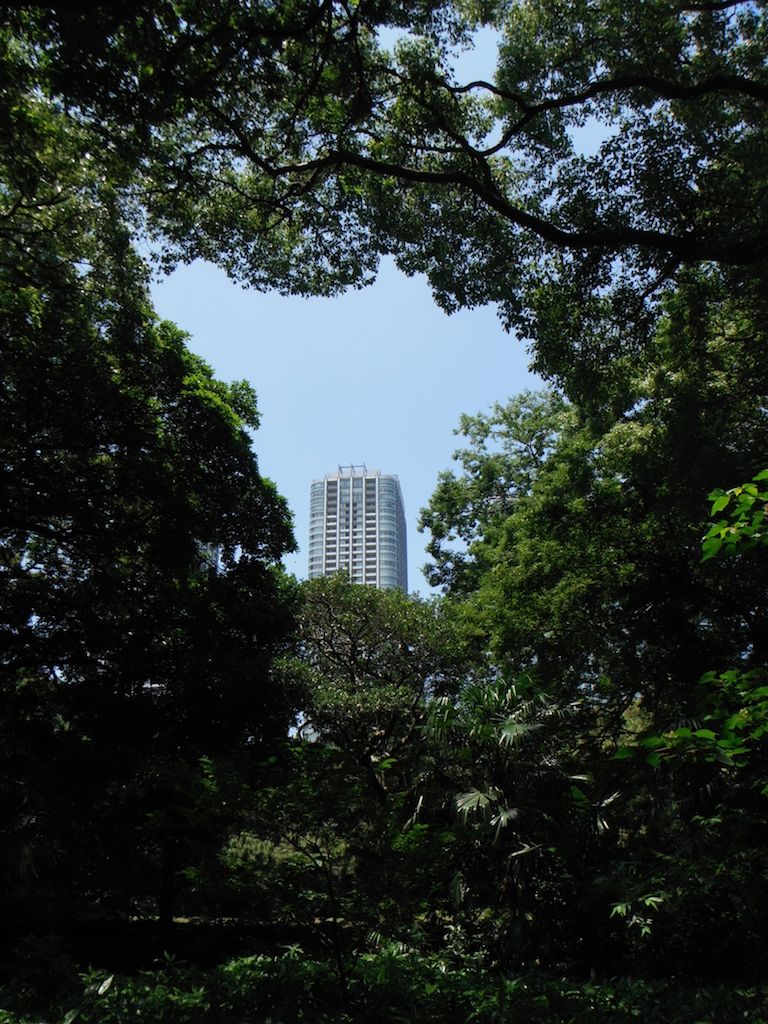
In the heart of Hamarikyu Garden you may feel miles away from urban life, but it's right outside the park gates.
Hamarikyu creates a haven—a place of rest—from the concrete and glass jungle. Large trees help keep the city sounds at bay. If you keep your eyes at tree level and below, you may forget you are in the largest city in the world.
Upon entering at the Otemon gate, pause to admire the massive 300-year-old pine tree. The giant specimen has limbs that ramble widely reminding you of a gargantuan octopus and tentacles . The arboriculturists use ingenious Japanese methods to stabilize and support the ancient limbs of the tree using wooden crutches.
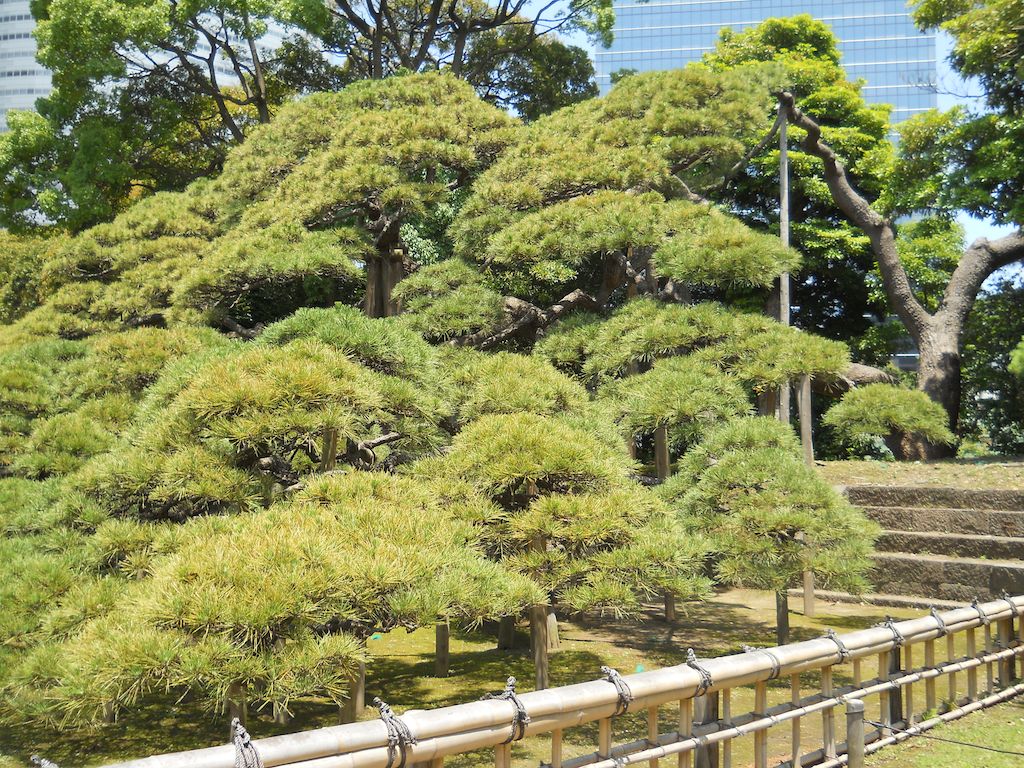
Ingenious wooden supports hold up heavy limbs of a 300-year-old pine tree like giant crutches.
Tranquil paths meander throughout the 62-acre landscape which boasts two duck ponds, a tidal pond, peony garden, tea house, flower gardens, plum tree grove, lawns, manicured pine trees, sluice gates and waterbus dock. Flowers bloom in profusion during the spring, summer and fall seasons.
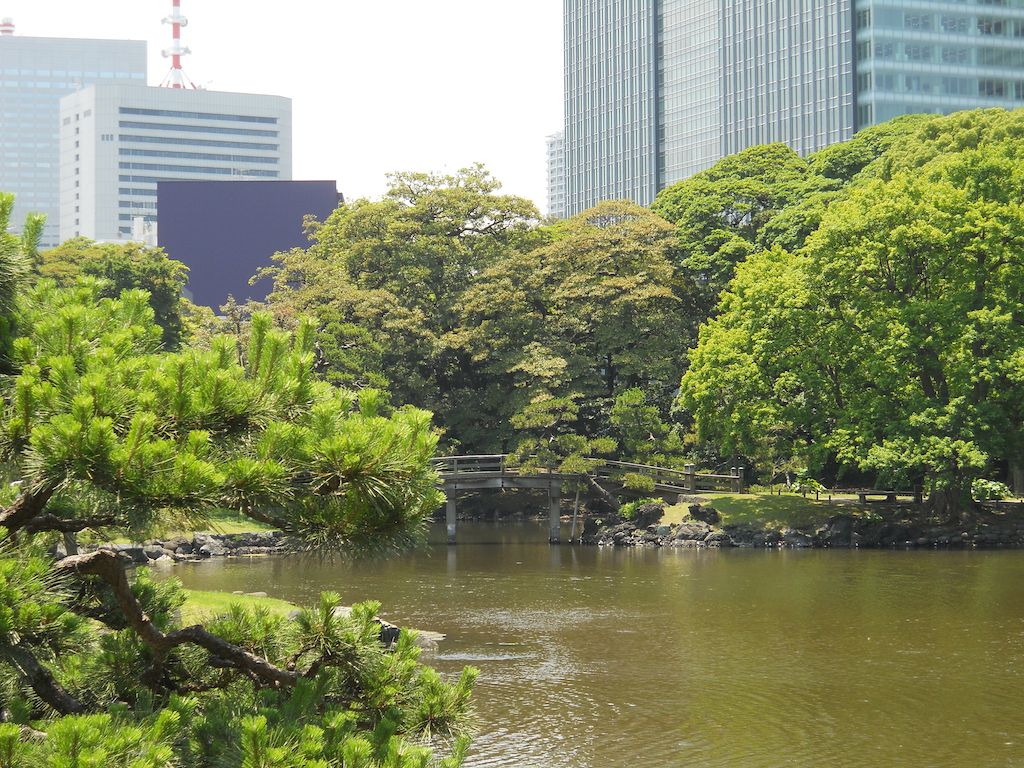
The paths around the 62-acre park lead to peaceful niches, exquisite bridges and quiet waterways.
Shiori-no-ike, the tidal pond, is Tokyo’s only remaining saltwater pond. Modern and old sluice gates sit side-by-side at the riverfront. They are still in use to regulate the water level of Shiori-no-ike as the tide goes in and out from Tokyo Bay.
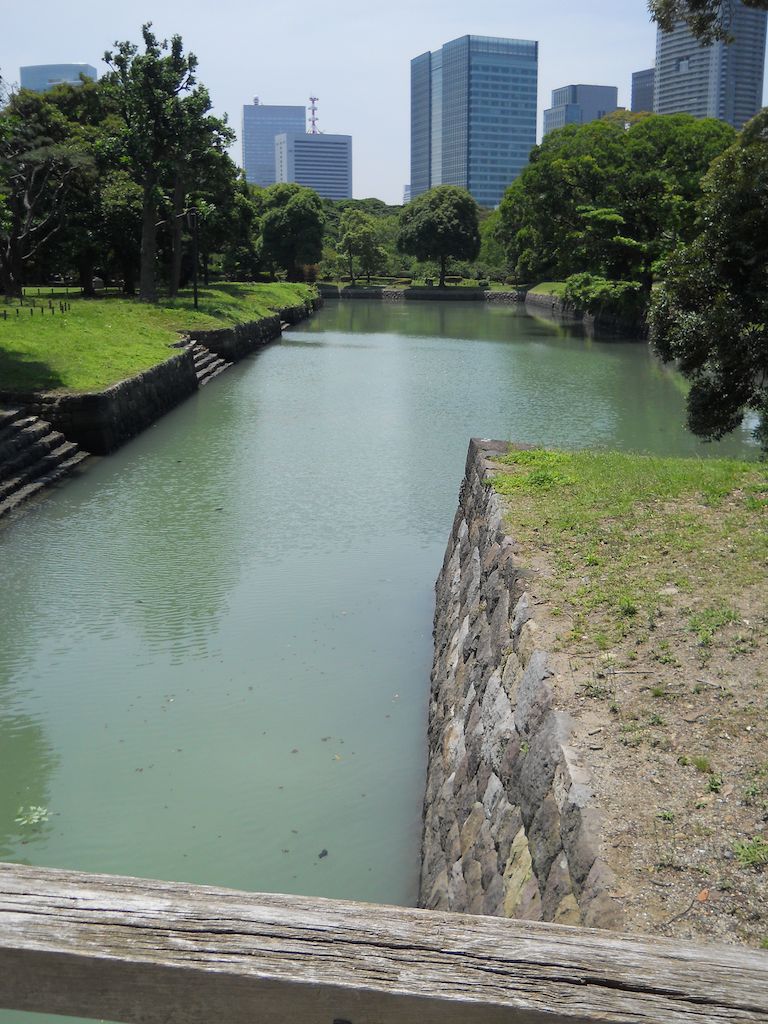
Aged stone steps lead down to the water where shoguns and guests used to boat for pleasure.
Nakajima-no-ochaya tea house is set on a small island in the tidal pond. Reach it via long wood bridges across spans of placid water lined with shiny green lily pads. The traditional tea house protrudes over the water creating a pleasant, scenic and unique setting in the busy mega-city. It is the perfect spot to pause and rest with a cup of matcha tea.
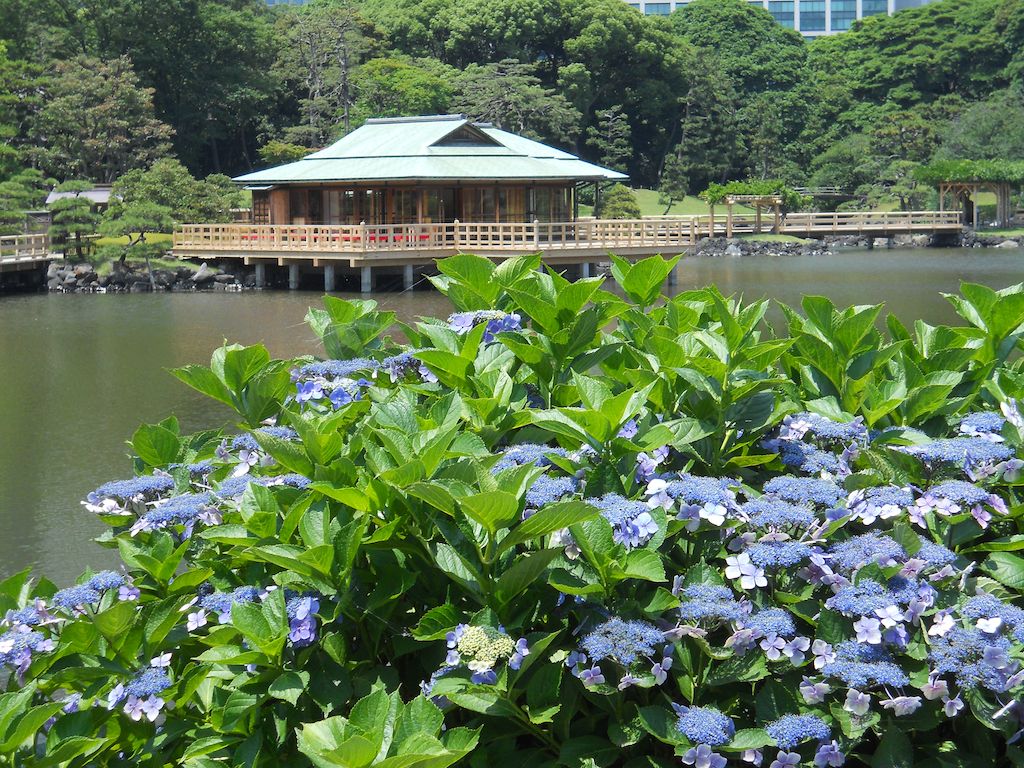
Nakajima-no-ochaya tea house hovers on a small island surrounded by the water of the Shiori-no-ike tidal pond.
The tea house, in continuous use since 1707, is the perfect spot to sample the traditional Japanese practice of matcha tea. The insulated setting is a green island disconnected from the hustle of the city, but its central location is easily accessible by train, bus, taxi or waterbus.
Enjoy Tea Ceremony at Nakajima-No-Ochaya
Remove your shoes, recline on your knees. While men sometimes sit cross legged, women do not. Select from cold or hot matcha (strong green tea made from powder). The server brings a tray with your tea, mochi confection and wooden utensil for cutting.
Eat the mochi first. Use the wooden utensil to cut it in two or four portions. You may insert the utensil into the bite-size piece to bring it to your mouth. Consume it completely. Next, pick up the cup with your left hand. Shift it to your right hand while rotating it 90° clockwise. Take a sip. Rotate it 180° and finish in the next two or three sips. Return the cup to the tray. Let your mind drift as you listen to the soft sounds of traditional Japanese music playing in the background.
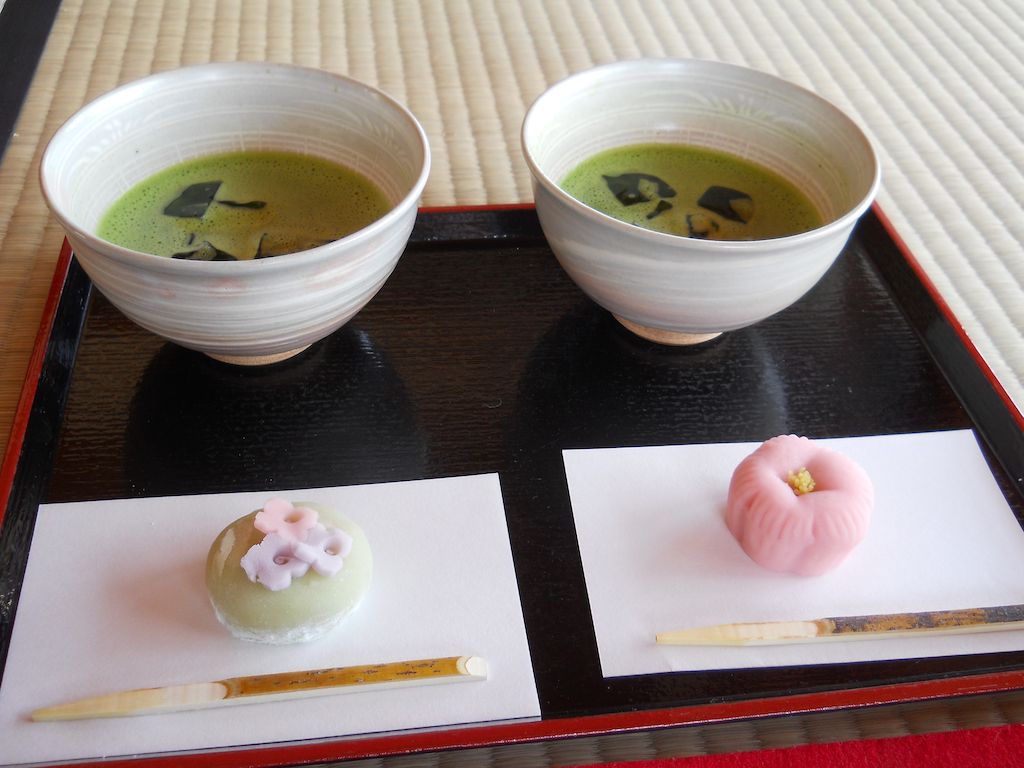
At the tea house you can enjoy cold or hot matcha tea and elegant mochi confections in a traditional setting.
Former U.S. President Ulysses S. Grant went duck hunting while visiting in 1879. The hunters would hide behind blinds while grain was spread to lure the ducks closer for feeding. When the ducks came to eat, hunters would whisk them up in handheld nets. Today the garden is a bird refuge. Birds gather freely in and around the two duck ponds without fear.
Originally, the property contained only a tidal pool and the duck ponds. In 1654, Matsudaira Tsunashige, ruler of Kofu, added more land by reclamation and built a residence. Later, Tsunashige’s son became 6th Tokugawa Shogun and the land became property of the Tokugawa family. The residence and grounds continued to change over the intervening years until the time of the 11th Shogun. During the Meiji Restoration the house became a detached palace for the Imperial family. It opened to the public as Hamarikyu Koen in 1946.
Linger in the gardens. There are benches and shady spots for conversation, thinking or reading. Artists find the serene surroundings inspirational. Bring your sketch pad or camera.
For a leisurely visit, set aside two and one half hours to tour the park . It is open daily from 9:00 to 17:00 except December 29 to January 1. Last entry is 16:30. Garden admission 300 yen. Tea at Nakajima-no-ochaya is 500 yen.
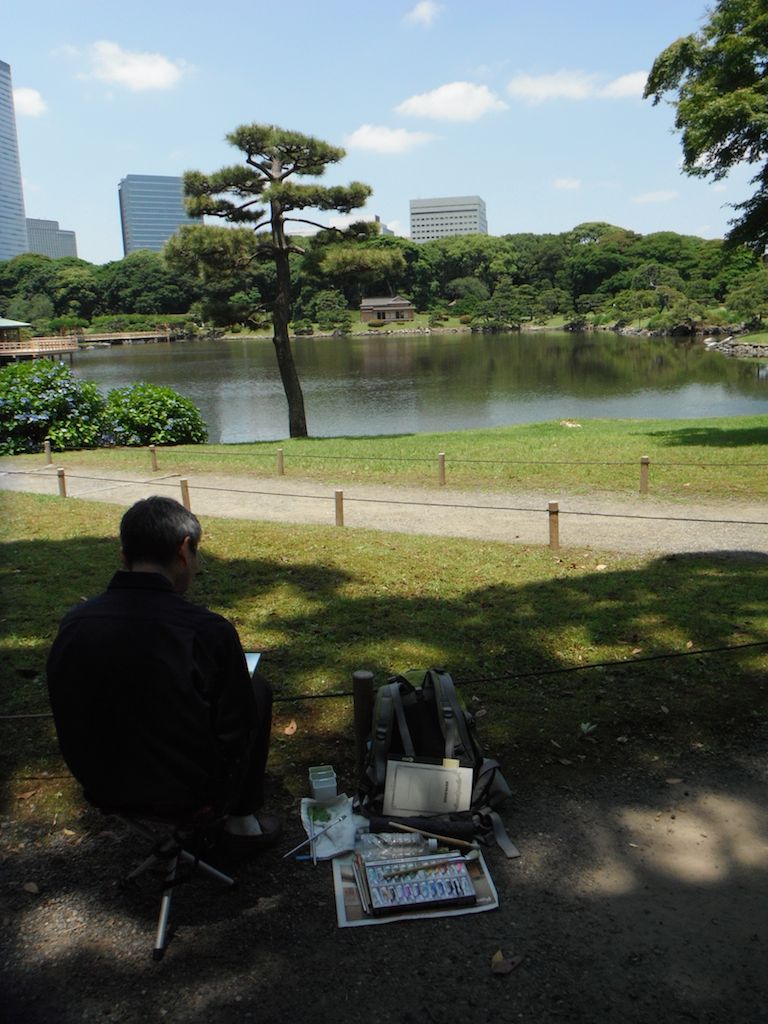
Artists often dot the landscape while attempting to capture the solitude and beauty of the gardens.